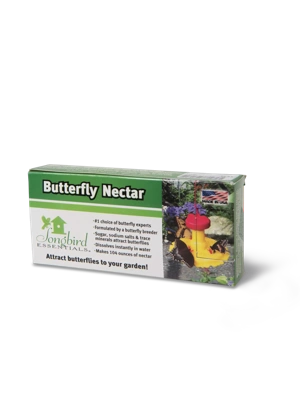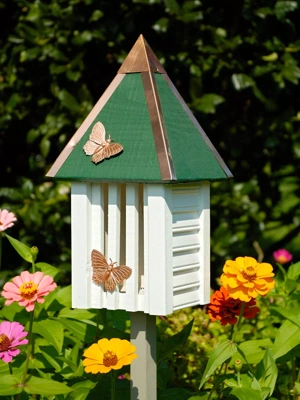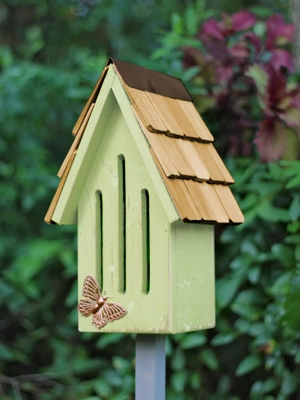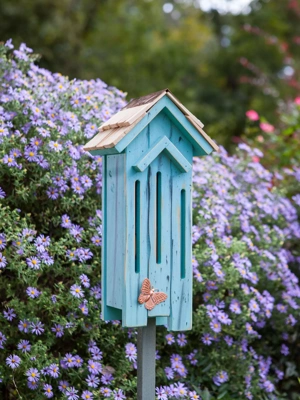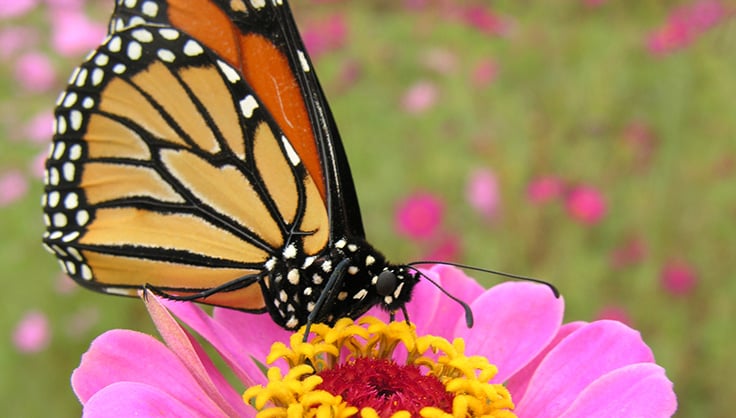Gardeners Play a Role in Creating Wildlife Corridors
By planting native species, we help animals and insects "connect the dots"
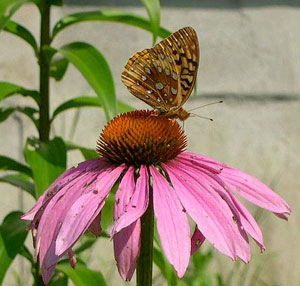
Great Spangled Fritillary adults feed on the nectar of many flowering plants, but their caterpillars can only eat violets (Viola species). Photos: Ann Whitman
By now you've heard the message to add native plants to your landscape. The urgency of that message and the potential impact of each person's contribution hit home for me in a lecture by Douglas Tallamy, author of the groundbreaking book, Bringing Nature Home: How You Can Sustain Wildlife with Native Plants. He explained how the cumulative efforts of individuals across the country planting wildlife-friendly gardens and landscapes can begin to reverse the habitat destruction and species loss that has occurred over the last century. And it starts right in my backyard.
Tallamy, a professor of entomology and wildlife ecology at the University of Delaware, showed us why native plants are critical to the survival of our most cherished animal species. That's because all ecosystems begin with plants, which harness the sun's energy through photosynthesis. Animals consume the plants and transform the energy into tissue that's consumed by other animals, and so it goes up the food chain. Without plants, ecosystems collapse. But not just any plant will do.
Why Native Matters
Adult monarch butterflies, for example, can sip nectar from many flower species. But their caterpillars only eat milkweed plants. They discern the chemical signature of food plants through sensors on their feet. If the chemistry doesn't match, they don't recognize a plant as food. No milkweed? No Monarchs. Many insect species will only eat plants with which they co-evolved. That's why native plants play such a critical role in healthy habitats.
Unfortunately, the majority of the large and diverse natural habitats that once existed in the U.S. have been lost or fragmented into small pockets, broken up and altered by cities, farms, industry and other human activity. Home landscapes with broad expanses of sterile lawns and non-native plants add to the problem. Huge areas of complex ecosystems that once supported thousands of species have been reduced to islands of habitat in a sea of inhospitable terrain. Separated from other suitable habitats, wildlife in these pockets have nowhere to go should natural or man-made disasters threaten. Add that to the fact that individual species populations weaken from inbreeding and you have a recipe for species decline.
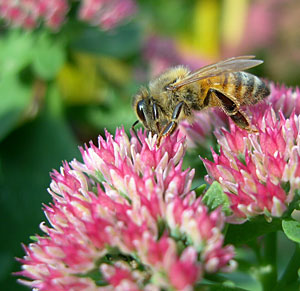
One third of our food supply depends on insect pollinators, such as bees. They need pesticide-free flowering plants and shelter to raise their young. To learn more, read Attracting Beneficial Bees.
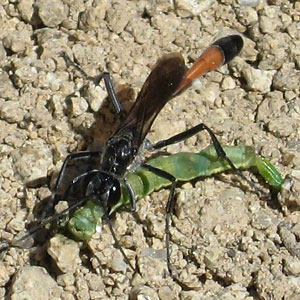
Leaf-eating caterpillars provide food for many other species, such as this wasp.
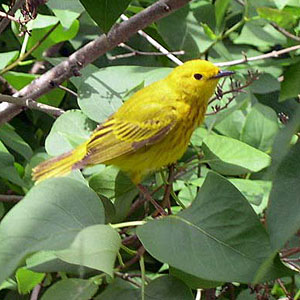
Yellow warblers need a steady supply of caterpillars and other insects to raise their young.
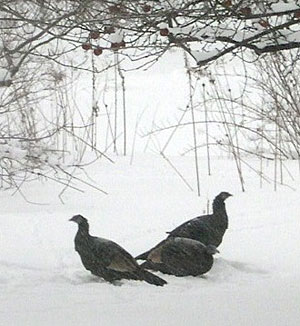
Wild turkeys need large, mixed habitats of trees and open grasslands. Adults eat seeds, berries, and foliage, but chicks rely on insects for their first few weeks.
Creating Corridors
What's a gardener to do? My first "aha!" moment during Tallamy's talk came when he explained how planting native trees and shrubs could reconnect our fragmented habitats to one another to form larger, more complex and diverse ecosystems. Backyard by backyard, neighborhood by neighborhood, when gardeners add native plants to their landscapes they create stepping stones connecting formerly isolated habitat islands. Biologists call these "wildlife corridors," and they're critical for species to find the food, shelter, and breeding opportunities they need to thrive. Every backyard, no matter how small, becomes part of the solution.
The Role of Insects
My second "aha" moment during Tallamy's presentation came when I learned that plant-eating insects comprise 37 percent of all terrestrial animal species on the planet. That's a pretty important link in the food chain and illustrates what a huge role insects play in healthy habitats.
So, the first step is to choose native plants that support diverse insect species. The National Audubon Society and other groups have been warning for decades that North American songbird populations are in steep decline and habitat loss is a primary culprit. Here's a pop quiz: What do 96 percent of bird species in North America (not counting water birds) feed their offspring? Hint: It's not seeds, not berries and not earthworms. The answer? Bugs.
Insects and arthropods (spiders and related species) provide the rich source of protein that young birds need for rapid and healthy growth. Without a steady supply of bugs, the vast majority of our beloved songbirds would vanish. In fact, many of them already have.
Small Steps, Big Impact
Tallamy isn't asking you to tear up your landscape and spend thousands of dollars on new plants. Instead, he recommends making small changes, one plant at a time. For the biggest impact, especially in small suburban yards, select plants that support the greatest number of species. Trees and shrubs sustain more species than perennials and are the best place to start. When it's time to replace a non-native Norway maple (Acer platanoides), for example, choose a native red or silver maple (Acer rubrum or A. saccharinum). Replace burning bush (Euonymus alata) with highbush or rabbit-eye blueberries, fothergilla, red chokeberry (aronia) or enkianthus. If you have room for a majestic shade tree, Tallamy recommends oaks, which support 534 animal species in the mid-Atlantic states.
What About Birdfeeders?
Birdfeeders don't support developing chicks, but they do provide food for many migrating and overwintering adult birds, as well as education and entertainment for humans. However, only about 10 to 15 percent of all bird species visit feeders. To attract more, plant native trees and shrubs that provide insect food and sheltered nesting sites. For a lists of the best native plants for your area and links to native plant societies, visit The National Wildlife Federation's native plant finder.
Expect insects to feed on your native plants and take that as a sign that your efforts to improve their habitat is working. Increasing the numbers of birds and other insect-eating animals will help restore the natural balance. Whenever possible, choose plants that meet multiple needs for native insects, birds and animals. Add fruiting shrubs for birds that nest in shrubby thickets close to the ground, for example, and the berries will also provide food.
The most important native trees and shrubs vary by region. When choosing a species to plant in your yard, it's important to use one that's actually native to your area, not just the U.S. A tree that evolved on the west coast, for example, may not provide suitable habitat in the New England states where it is not naturally found. See What About Birdfeeders for more information about the best plants for your region. Your plant choices really do make a difference.
Last updated: 01/05/2023
Print this Article:
Related items
Related Articles
Get the Dirt
Stay up to date on new articles and advice. Please fill out the information below.


